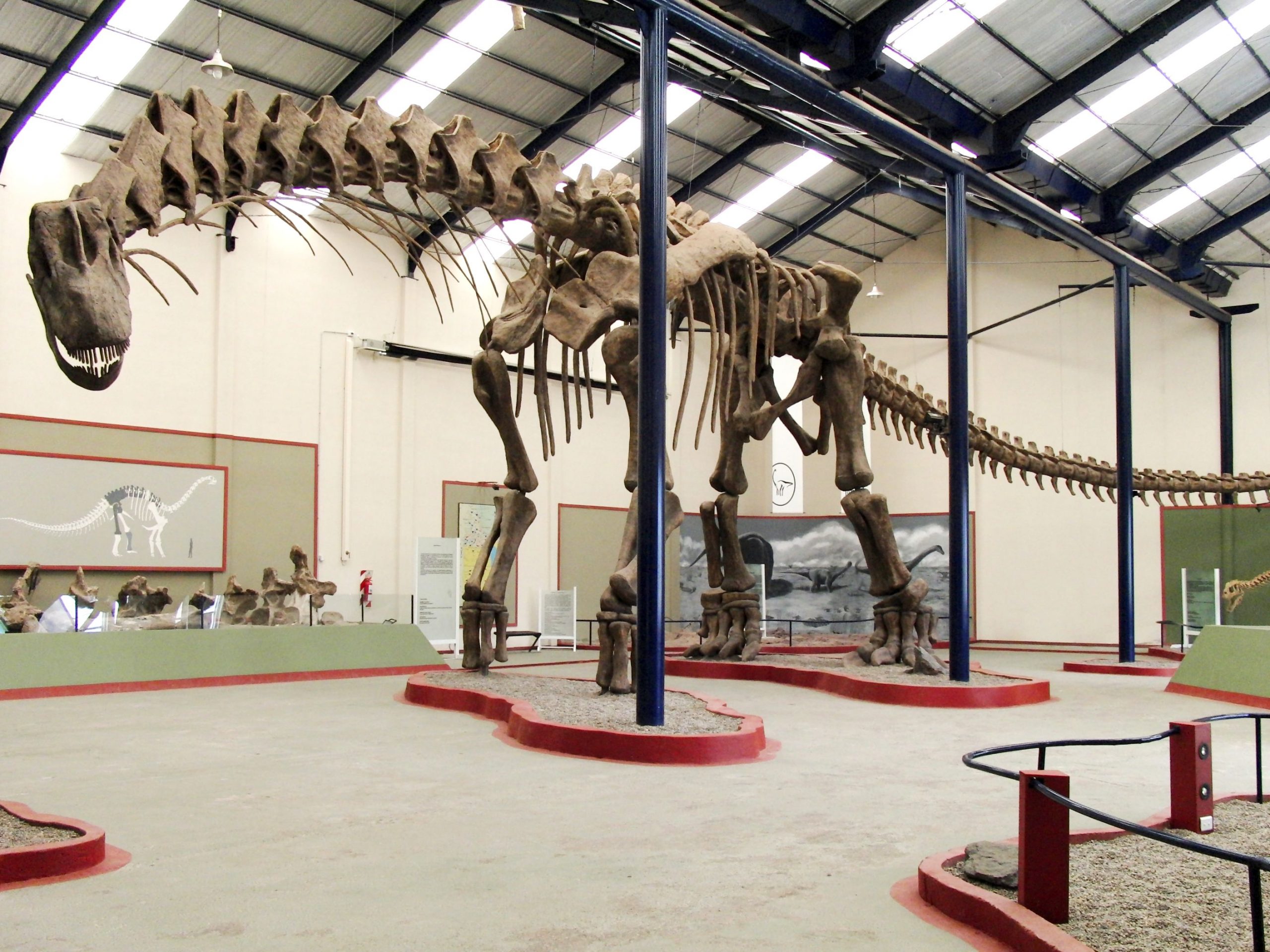How Big? How Tall? And…How Did It Happen?
The long-necked sauropod dinosaurs are perhaps the most culturally iconic prehistoric animals, appearing in everything from the Flintstones cartoons to the Sinclair gas station logo.  The first live dinosaur glimpsed by the paleontologists in Jurassic Park was a sauropod, and even the first animated dinosaurs—Gertie (in 1914)—was a sauropod. Every parent knows Brontosaurus, and every kid knows that it’s actually called Apatosaurus. Some of the most awe-inspiring skeletons at a natural history museum are the sauropods. Much of this influence comes down to one thing: immense size. Sauropods were the biggest animals ever to walk the land, and even Hollywood is hard-pressed to come up with something more imaginative than that which evolution wrought.
The first live dinosaur glimpsed by the paleontologists in Jurassic Park was a sauropod, and even the first animated dinosaurs—Gertie (in 1914)—was a sauropod. Every parent knows Brontosaurus, and every kid knows that it’s actually called Apatosaurus. Some of the most awe-inspiring skeletons at a natural history museum are the sauropods. Much of this influence comes down to one thing: immense size. Sauropods were the biggest animals ever to walk the land, and even Hollywood is hard-pressed to come up with something more imaginative than that which evolution wrought.

Extremes in biology beg the question of how. How did sauropods achieve their massive size? Was it something in their metabolism? Something in their food supply? Something in their reproductive cycle? How did sauropods carry themselves? Did they have erect necks like an ostrich, or something more horizontal? Or was every sauropod a little different? These questions may seem best answered by the impossibility of a living sauropod. Indeed, there is only so much one can tease from a skeleton. However, there is also great power in this limitation.
http://youtu.be/a1OP-fKcjHc
Sauropods not only pushed biological limits—they also push the limits of our own biological knowledge. A new PLOS ONE collection on sauropod dinosaurs, Sauropod Gigantism: A Cross Disciplinary Approach, explores these boundaries. Based in part on the results of a grant and workshops funded by the German Research Foundation, the papers in this collection cover virtually every aspect of sauropod biology—anatomy, physiology, reproduction, function, and more. Perhaps the most powerful aspect of the collection is that its results are not myopic, but have implications for multiple endeavors within biology. Want to understand how sauropods held their necks? We have to understand something about neck anatomy and function in modern animals. Want to understand how sauropods got so big? We have to understand something about growth in dinosaurs. Want to understand how sauropods evolved their reproductive strategies? It is essential to explore the topic in modern animals! Sauropods undoubtedly serve as the backdrop to better understand our modern world, and can help us learn which questions about modern animals haven’t even been asked yet.

The papers in the collection cover a variety of topics, and sum up nearly a decade of concentrated work by a variety of researchers. Although some of the contributions will not be without contention within the research community (arguably a good mark of relevance!), all of the papers measurably advance our knowledge. The most powerful aspect of this is in exploring the biological limits that guide both modern and extinct animals. These limits are a moving target, the product of a virtually infinite number of variables. By identifying the most critical variables, it is possible to both explain modern biological systems as well as infer the behavior of prehistoric ones. Although we may never know the exact details of sauropod biology, the research presented here goes a long way towards marking those boundaries of biological probability. Not too bad for animals that have been dead for over 65 million years.
Check out a new slideshow version of this post on DiscoverMagazine.com
____________________________________________________________
(Disclosure: Andy Farke served as a PLOS ONE academic editor on multiple Sauropod Gigantism Collection papers)
GO TO THE COLLECTION NOW on the PLOS Collections page Sauropod Gigantism: A Cross-Disciplinary Approach
The PLOS ONE Sauropod Gigantism Collection will be launched at the meeting of the Society of Vertebrate Paleontology (#2013SVP) in Los Angeles October 30-November 2, 2013, of which PLOS is a Gold Sponsor. Come to the PLOS ONE booth #4 to meet the editors and receive a free USB drive of the entire collection!
Read other PLOS Network blogger posts on the PLOS ONE Sauropod Gigantism Collection elsewhere:
On DiscoverMagazine.com “The Crux” How Brachiosaurus (and Brethren) Became So Gigantic
On HuffingtonPost/Science A tail’s tale: Holey bones found in sauropod tails
